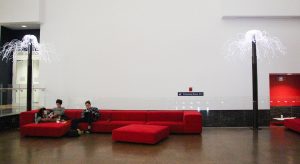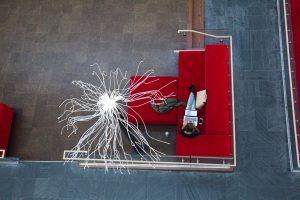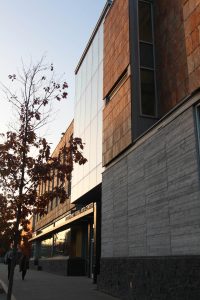These words are the title of a masters thesis by Sarah L. Fudjak, a graduate of Smith College. Like many students in the U.S., she finds the overwhelming cultural emphasis on extroversion to be stifling, citing author Susan Cain’s Quiet in her research. (4) In our American-Dream culture, we are convinced that fighting our way to the top is the only option. To be successful, we must be heard, and to be heard, we must be loud. There is seldom a truly silent spot in many populated areas, where noise pollution and information overload seem to seep into every space. But according to voices like Susan Cain and Sarah Fudjak, this isn’t necessarily the best mindset. There is increasing evidence of the power of quiet – even and maybe especially in today’s metropolis of noise. (5)
The importance of quiet public spaces has been under-appreciated in discourse on urban and public design. David Fleming’s principles of public design are all oriented towards inspiring interaction, and creating a context for discussion. (7) Urban sociologist Ray Oldenburg proposes the idea of the “third place” as an important concept, one independent from work and home, as a necessary space for social interaction. (6) These spaces create a sense of community, and help develop positive social values through public accountability. But they don’t allow for the quiet that is so often necessary for productive and inspired work.
The Black Family Visual Arts Center at Dartmouth College in Hanover, NH is a prime example of a space that actually manages to do what so many public spaces fail to do. The ground floor lobby is not a workspace, and not a home, but after a few moments spent there it’s apparent that it’s not a conventional public space, either. It doesn’t prompt the social interaction or collaboration that many of these “third places” do, but it is a beautiful backdrop for more quiet, independent work.
A Fourth Space for Creativity


The design of this space, as well as its current use, would suggest that it fills the role of a necessary fourth space in our society. The ground floor lobby creates a type of public privacy that is crucial to creative inspiration and work. People there are under public surveillance, but not actively, giving them the freedom to incubate new ideas.
One can draw an analogy to a proctored exam, where the proctor stays in the room but does not actively watch each test-taker. As a student, it gives you some security to know that an authority is in the room to help if needed, and it holds you accountable. But if the proctor were to come stand over you or ask questions while you were taking the test, you wouldn’t be able to get any real work done. The same goes for doing work in public spaces. In a quiet yet public setting, one is able to work creatively and hear their own voice, while also drawing inspiration and security from those around them. The ground floor of the Black Family Visual Arts Center accomplishes this by creating a public privacy that is understood by users of the space.
